An Ode to the Nuphy Air96 v2 Mechanical Keyboard
This is not a review of the Air96 v2 low profile mechanical keyboard. These are just my impressions of using one for almost a month, after using the v1 model for over a year.
The Air96 v2, on first blush, looks nearly identical to its predecessor. It’s a full-sized keyboard, with number pad. In my review of the v1 model, I alluded to the idea that the Air96 is a spiritual successor to the Apple IIGS ADB keyboard. I still stand by that sentiment with the v2 model.
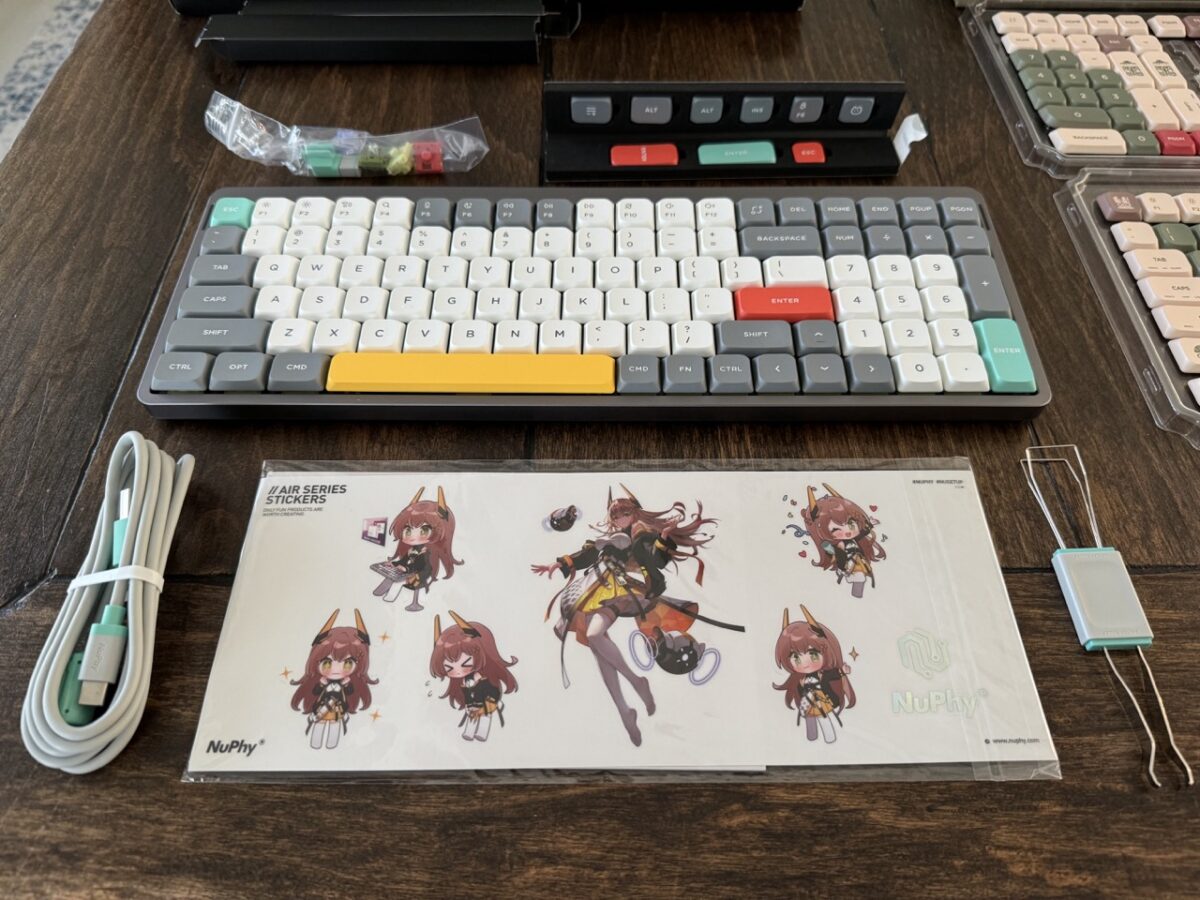
In the Nuphy Air96 box, you’ll find stickers, a USB-C cable, keycap / key switch puller, sample key switches and the keyboard itself.
I ordered my Nuphy Air96 v2 directly from Nuphy’s website, with the following specifications:
- Lunar Gray color
- Aloe key switches
- Carved Prairie key caps
For those who are unfamiliar with mechanical keyboards, keycaps are the physical caps that display letters, numbers, and other symbols, while key switches are the physical switches that register key presses when you press on a keycap.

A close-up of the Carved Prairie custom keycaps (purchased separately). Nuphy offers a range of keycaps to customize your keyboard’s look.
Going into detail on the intricacies of key switches and keyboard layouts is well beyond the scope of what I plan on writing in this post, but Switch and Click has an excellent primer on all things mechanical keyboard related that will satisfy those who are “mechanical keyboard curious”.
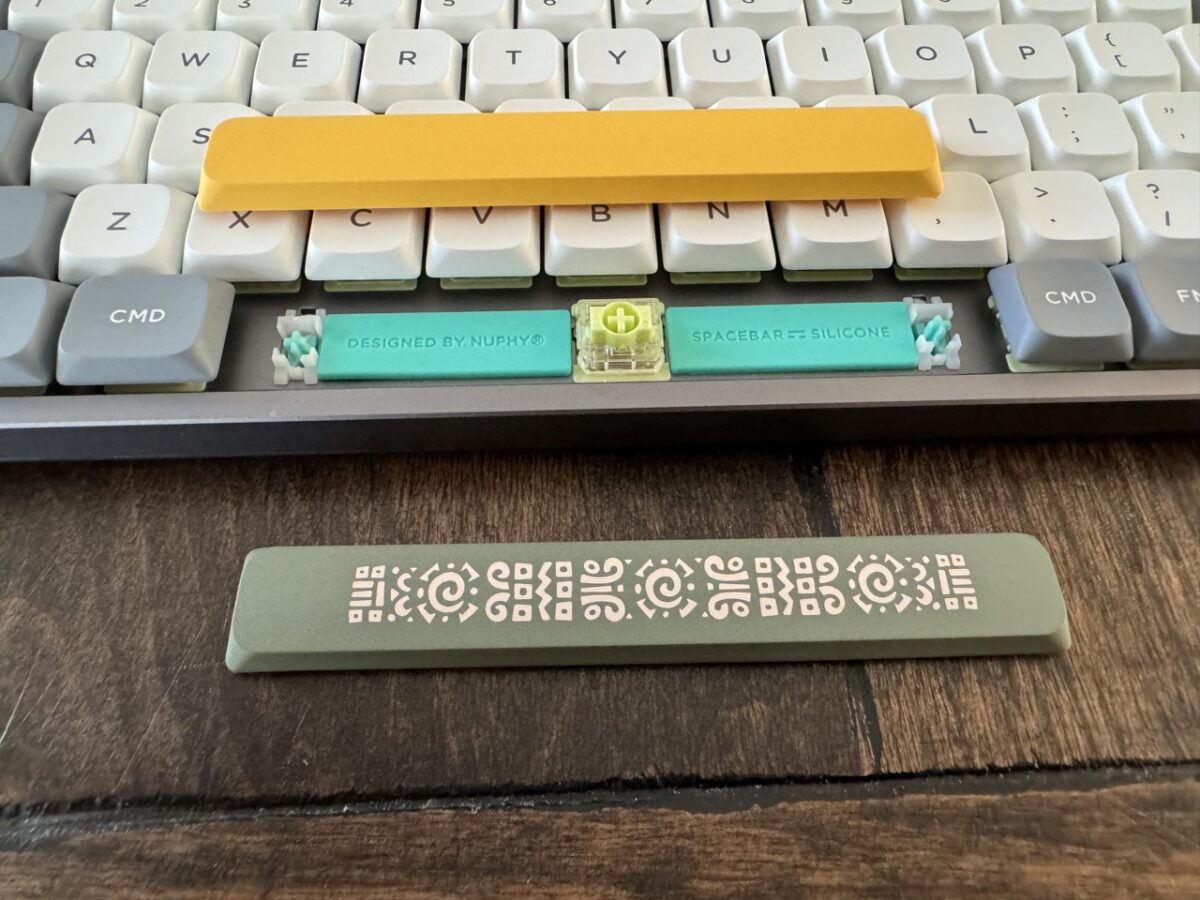
The Nuphy Air96 keyboards have a unique spacebar called the “Ghost Bar”. It has a very satisfying thock sound when typing.
Nuphy’s Air96 line consist of various keyboard layouts utilizing a low-profile set of key caps. As its name implies, the key caps are lower in height, and closer to the keyboard chassis. For some typists, including yours truly, typing on a low profile keyboard makes for a more comfortable and pleasant touch-typing experience.
My v1 Nuphy Air96 keyboard came with Daisy key switches, which I really liked typing on. The Aloe key switches in the Air96 V2 are even better to type on, as they require even less actuation force to register a key press. This makes for an even smoother typing experience.
I’ve used both Air96 v1 and v2 keyboards interchangeably at my desk, and my preference leans heavily towards the Aloe key switches. Switching from the Aloe key switches to the Daisy key switches feels ever so slightly jarring to me. If I didn’t have the Aloe key switches to compare with, I would be more than content with the Daisy key switches. But now that I’ve used Aloe key switches for a while, I feel spoiled. So much so, I’ve actually contemplated replacing my v1’s Daisy key switches with the Aloe key switches.
The big difference between the Air96 v1 and v2 models is that the v2 supports the standard QMK/VIA firmware for updating and remapping your keyboard. (For details on both types of firmware, I recommend reading this article via KineticLabs).
The v2 also has a higher polling rate (1000 Hz, vs 500 Hz), making for even less latency than before. (Truth be told, in my own daily usage, I haven’t noticed any latency issues with the first generation Air96 model. But then again, I don’t game on any of my computers.)
The Air96 supports both wired and Bluetooth methods of connectivity, and works flawlessly on both Mac and PC platforms.
Keyboards are tough to review because everyone has their own specific preference. I’ll go on record to say that for me, the Air96 v2 exceeds my expectations as a typing instrument.
-Krishna

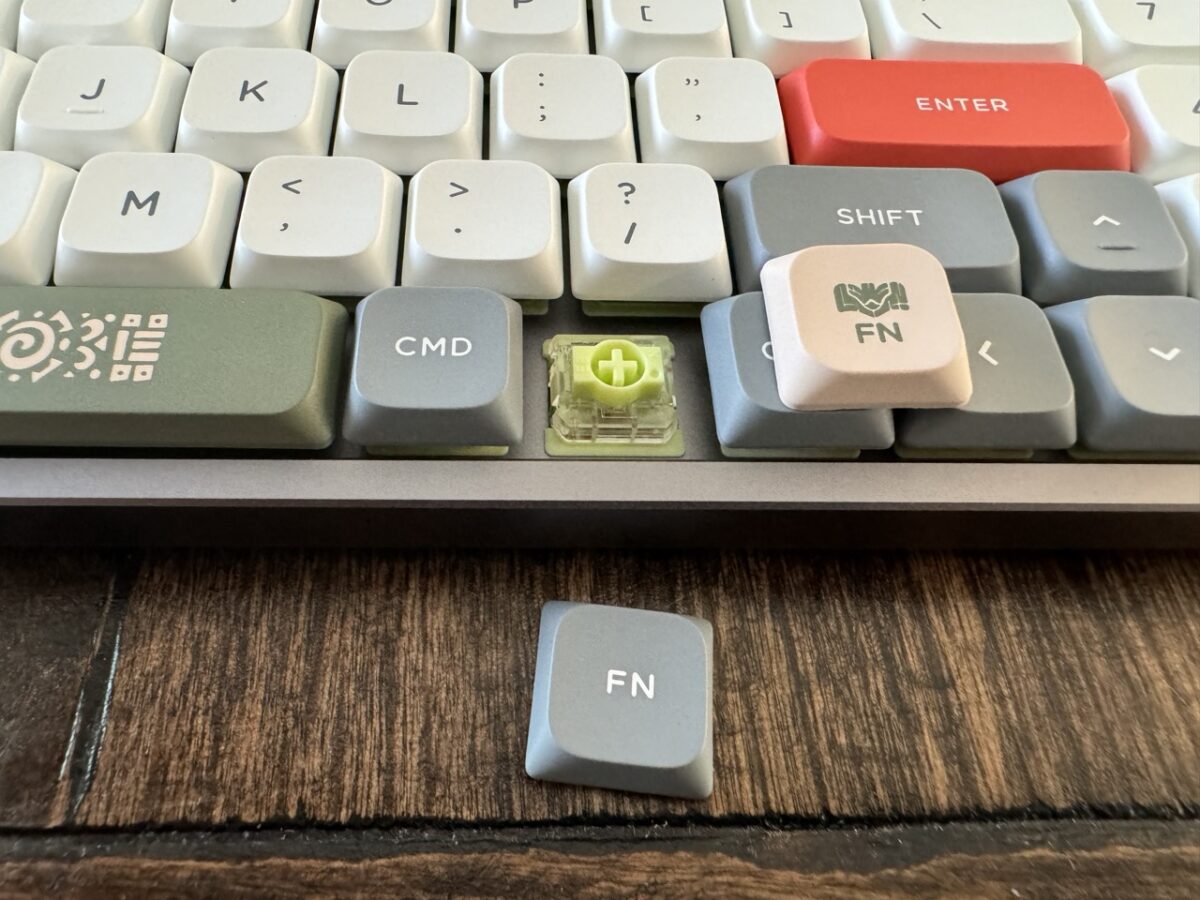
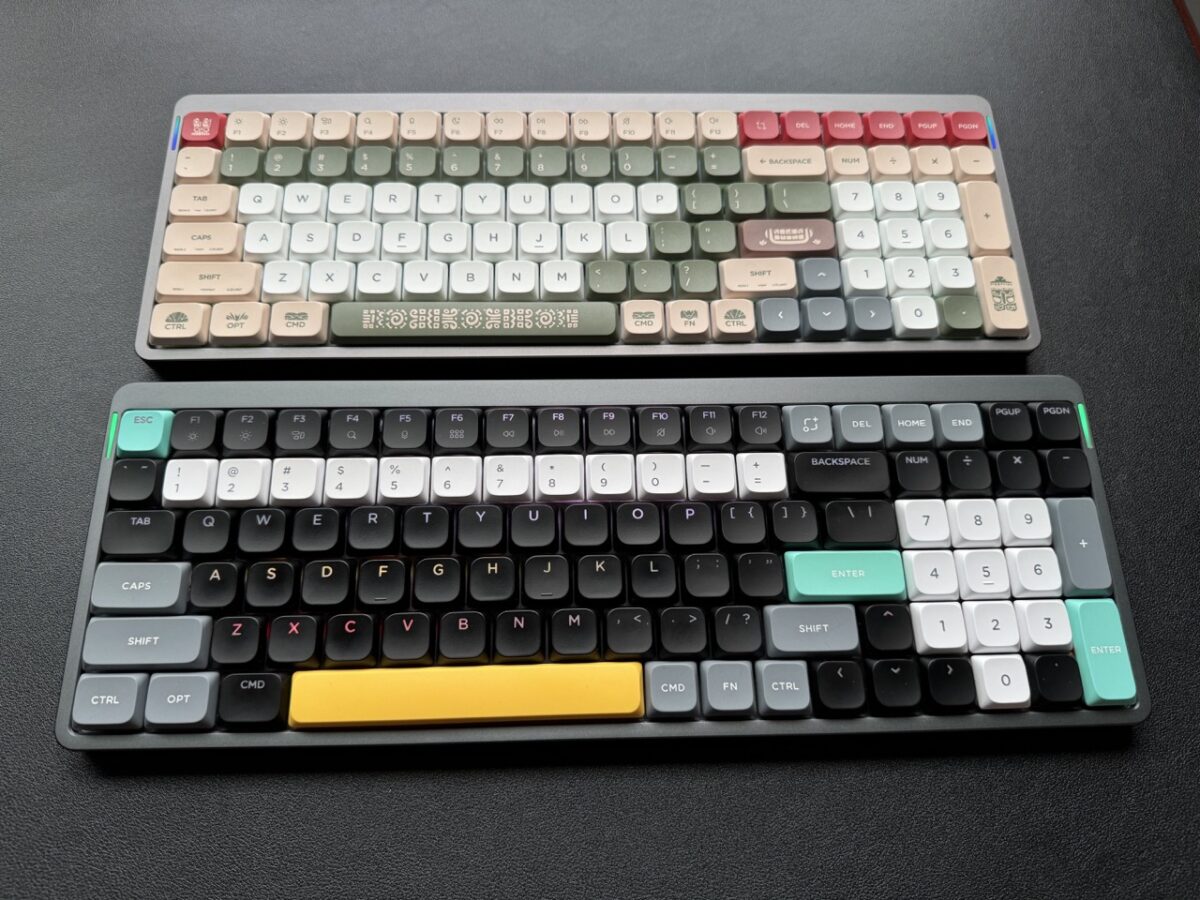
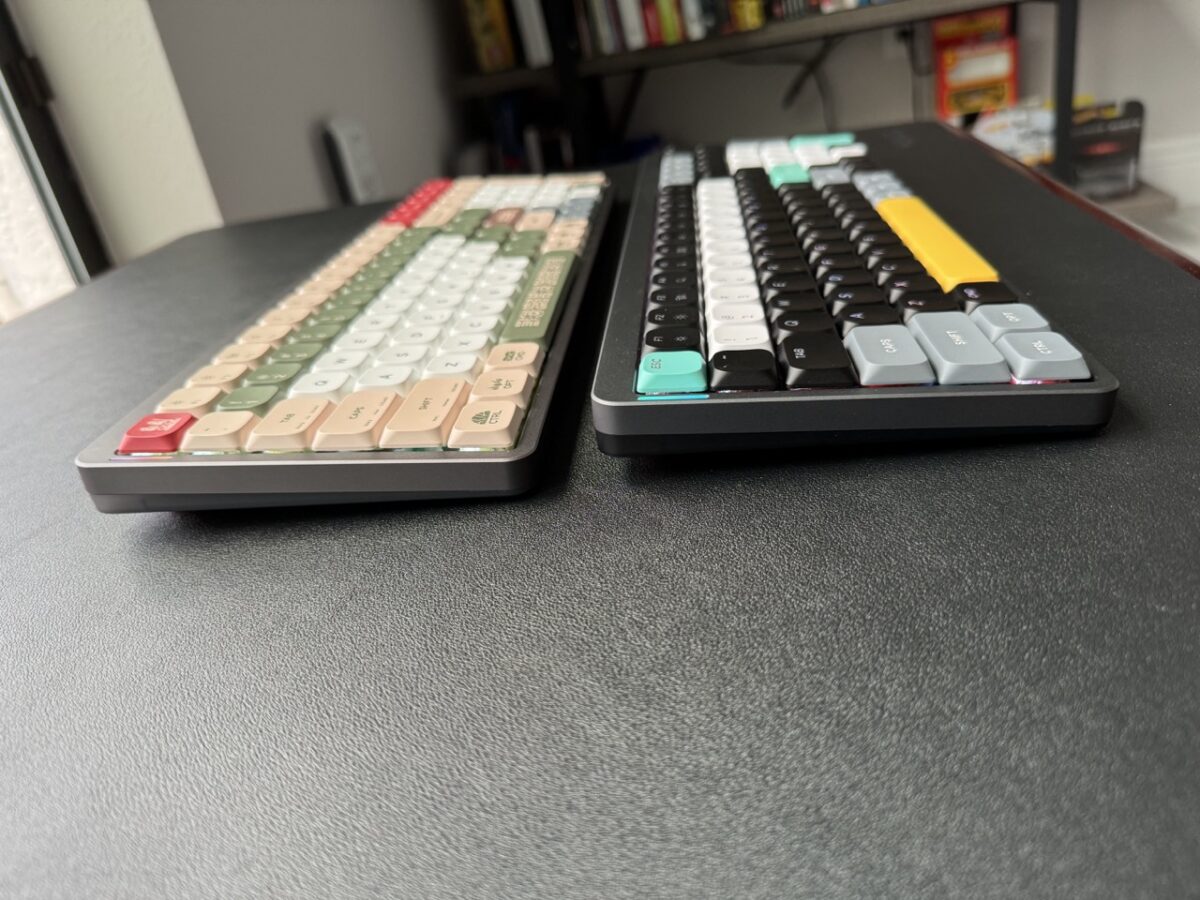
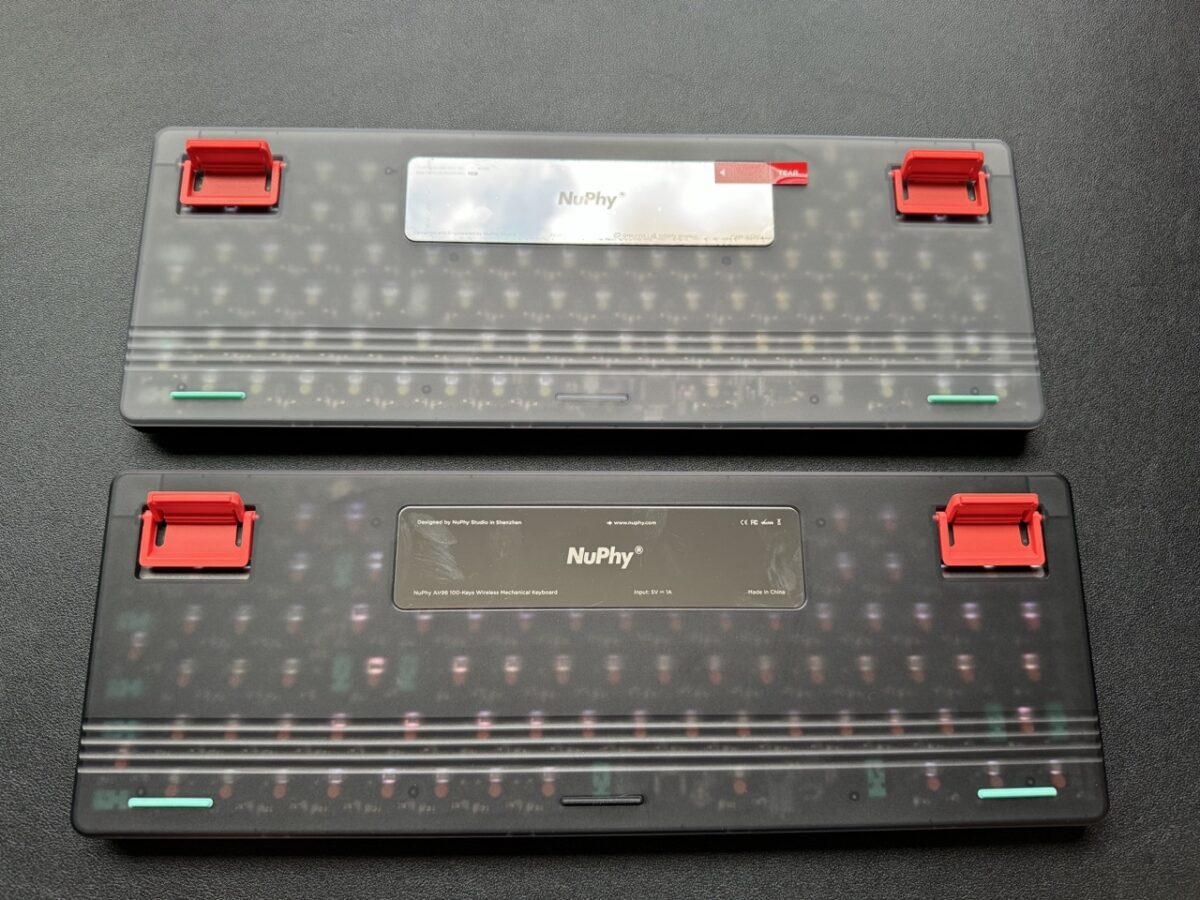



No comments yet. Be the first!